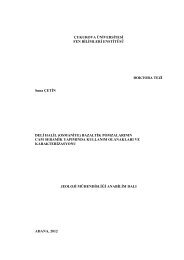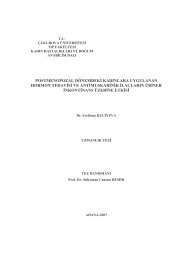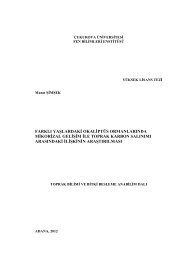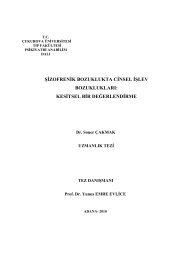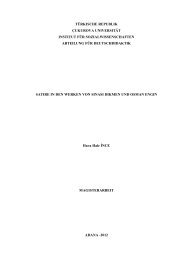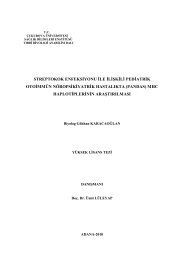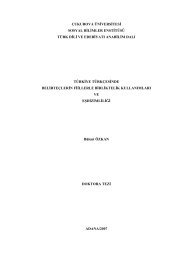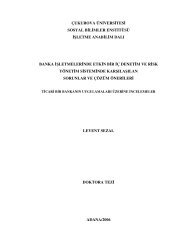ÇUKUROVA UNIVERSITY INSTITUTE OF NATURAL AND APPLIED ...
ÇUKUROVA UNIVERSITY INSTITUTE OF NATURAL AND APPLIED ...
ÇUKUROVA UNIVERSITY INSTITUTE OF NATURAL AND APPLIED ...
You also want an ePaper? Increase the reach of your titles
YUMPU automatically turns print PDFs into web optimized ePapers that Google loves.
4. MODELING <strong>OF</strong> PROPOSED DVR Mustafa İNCİ<br />
The voltage across L1 is Vo, resulting in a linearly decreasing current in L1.<br />
The change in current while both switches are open is<br />
∆I<br />
∆t<br />
L1<br />
∆I<br />
L1<br />
V<br />
= = −<br />
T / 2 − DT L<br />
O<br />
1<br />
(4.17)<br />
State 3, Second on-period, T3: A second on-period similar to the first is initiated<br />
when switches, S3 and S4, are turned on. Reflected inductor current flows from input<br />
capacitor, C1, through switch, S3, transformer, T1, (in opposite direction compared<br />
to first on-period) diode, D3, and inductor, L1, to the output. Current returns to input<br />
through diode, D4, and switch, S4. The period ends when switches, S3 and S4, are<br />
turned off again. Period time is equal to the first on-period, (Nymand et al.,<br />
2010).<br />
State 4, Second off-period, T4: Finally, a second off-period starts when switches,<br />
S3 and S4, are turned off. All primary switches are off. Inductor current, iL1, is freewheeling<br />
through the two parallel branches, D1-D4 and D3-D2, to output. Inductor<br />
current is discharging. Transformer magnetizing current circulates in the transformer<br />
secondary winding (in opposite direction to first off-period) and the diodes, D1-D3<br />
and/or D2-D4. The period ends when switches, S1 and S2, are turned on. Period time<br />
is equal to the first off-period time, T<br />
4<br />
= T 2<br />
. Duration of the off-period is (Nymand et<br />
al., 2010):<br />
Since the net change in inductor current over one period must be zero for<br />
steady-state operation,<br />
( ∆ ) + ( ∆I<br />
) 0<br />
I (4.18)<br />
L, closed L,<br />
open<br />
=<br />
1<br />
L<br />
1<br />
⎛ N<br />
S<br />
⎞ VO<br />
⎜ Vin<br />
−VO<br />
⎟DT<br />
+ ( T / 2 − DT ) = 0<br />
(4.19)<br />
⎝ N<br />
P ⎠ L1<br />
58



